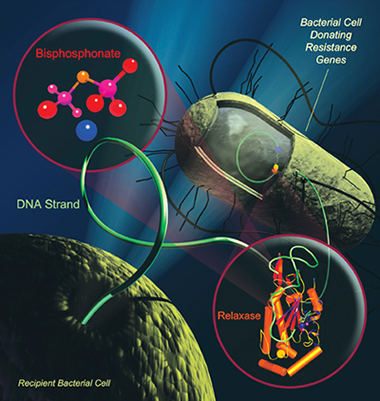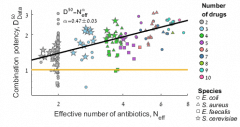Combined attack treatment that combines different types of antibiotics. The study shows that the effectiveness of the cocktail is mainly influenced by the variety of drugs in it and not by their dosages

Researchers at the Faculty of Biology at the Technion presented in the journal Nature Microbiology an innovative system for measuring the effectiveness of an "antibiotic cocktail" - a treatment that combines different types of antibiotics. The study shows that the effectiveness of the cocktail is mainly influenced by the variety of drugs in it and not by their dosages. The research was conducted by Prof. Roi Kishoni from the faculties of biology and computer science and doctoral student Dor Ross.
Antibiotics are one of the most important inventions in the history of medicine. To a large extent, it is more of a discovery than an invention, since antibiotics developed in nature in fungi and yeasts in an evolutionary process that increased their ability to survive. The development of drugs based on these natural antibiotic substances began about a century ago thanks to the research of Sir Alexander Fleming, Howard Florey and Ernest Chain, winners of the 1945 Nobel Prize in Medicine.
Since its inception, antibiotic therapy has saved the lives of many millions, yet its success has turned it into a double-edged sword. This is because the use of antibiotic drugs leads to the development of antibiotic-resistant bacteria - a process that Prof. Kishoni previously presented through a unique platform he built with his colleagues at Harvard. Today, many researchers express fear of a post-antibiotic era, in which bacteria will no longer respond to antibiotic drugs. One of Prof. Kishoni's contributions in this context is a method that makes it possible to estimate the current level of resistance of a given bacterium to antibiotics and furthermore - to predict the resistance it is expected to develop in the future. Based on this information, it is possible to adjust the most effective antibiotics to the patient.

As mentioned, the current study examined the effectiveness of "cocktails" of different antibiotic drugs. The researchers developed an innovative automatic system that allows accurate measurement of the effect of different cocktails on bacteria. They found that as the number of different antibiotics in the cocktail is greater, the total amount of drugs must increase, but it is possible to reduce the amount of each of them without reducing the effectiveness of the cocktail. The researchers tested different mixtures of multiple antibiotics (cocktail) on several types of bacteria, and thus verified the effectiveness of the system they built.
The research was supported by the American Institutes of Health (NIH), the Israeli Centers for Research Excellence (I-CORE) and the European Research Council (ERC).
For an article in the journal Nature Microbiology
More of the topic in Hayadan:
